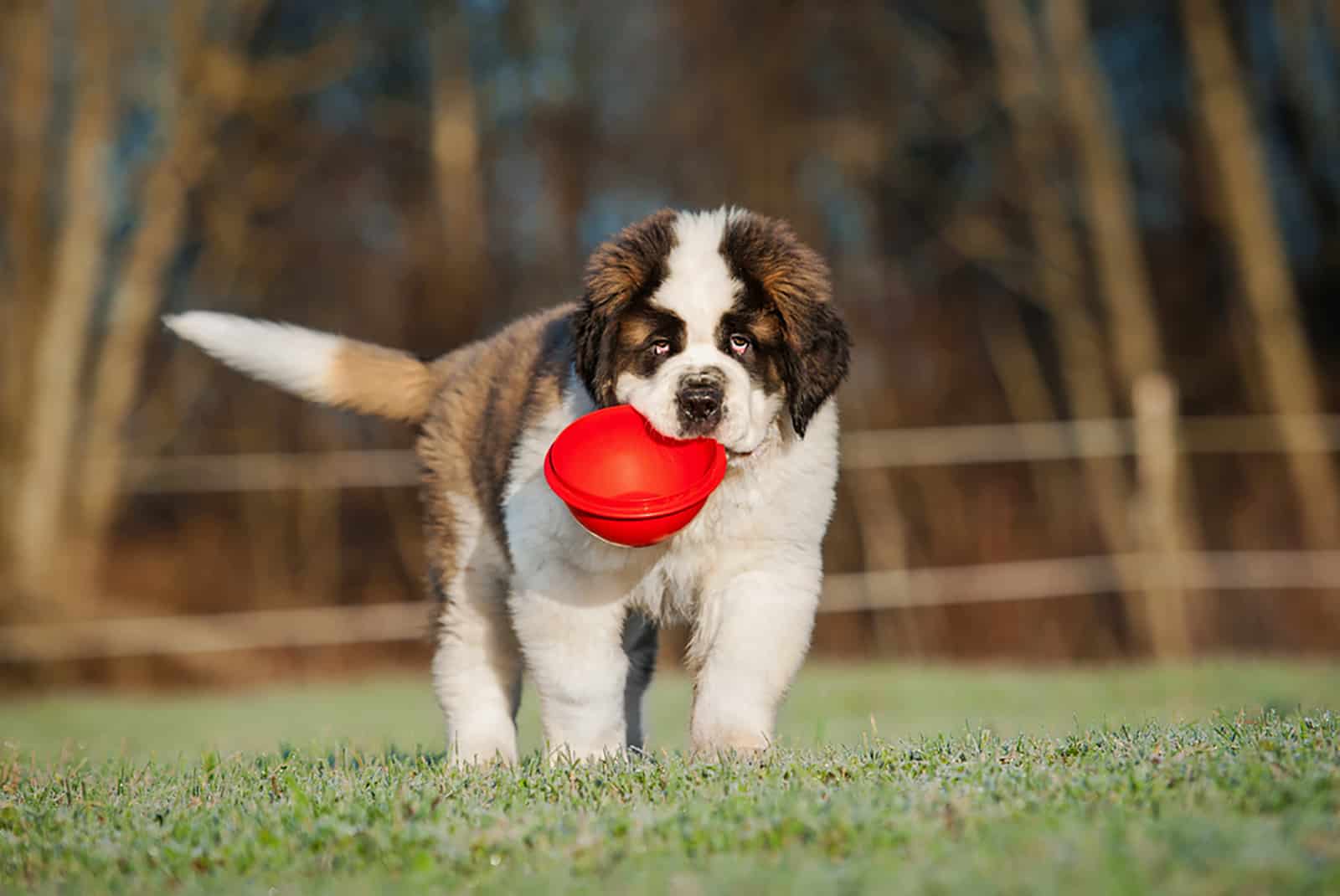Like any large breed dog, the Saint Bernard requires a lot of food on a daily basis.
They are a very gentle dog breed and don’t usually need a lot of exercise, but they still need a high caloric intake just to maintain their body weight and muscular build.
That’s why it’s incredibly useful to have an easy—to–use Saint Bernard feeding chart that you can consult when feeding them.
Saint Bernards, originating from the Swiss and Italian Alps, are one of the most popular dog breeds in the world, mostly because of their friendliness and gentle demeanor around both kids and adults, making them great family pets.
They are naturally highly intelligent and fond of socialization, but their most important trait is probably their high work rate, which is why they have been recognized by the American Kennel Club as part of the Working Dog group.
When it comes to their nutrition, it’s not just about the quantity of food, but also about the quality. A large dog like the St. Bernard needs high-quality food that delivers all the necessary nutrients that will keep them healthy and happy.
There are many factors to consider when creating a feeding schedule for your gentle giant and it can sometimes seem overwhelming and too complicated to figure out.
That’s where we come in – in this article, we will not only show you a handy Saint Bernard feeding chart but also outline all the details that you need to keep in mind.
The Saint Bernard Feeding Chart By Age
Saint Bernard Feeding Chart By Age In Weeks
[table id=559 /]
Saint Bernard Feeding Chart By Age In Months
[table id=560 /]
Saint Bernard Feeding Chart By Age In Years
[table id=561 /]
How Much Dog Food Should I Feed My Saint Bernard Puppy?
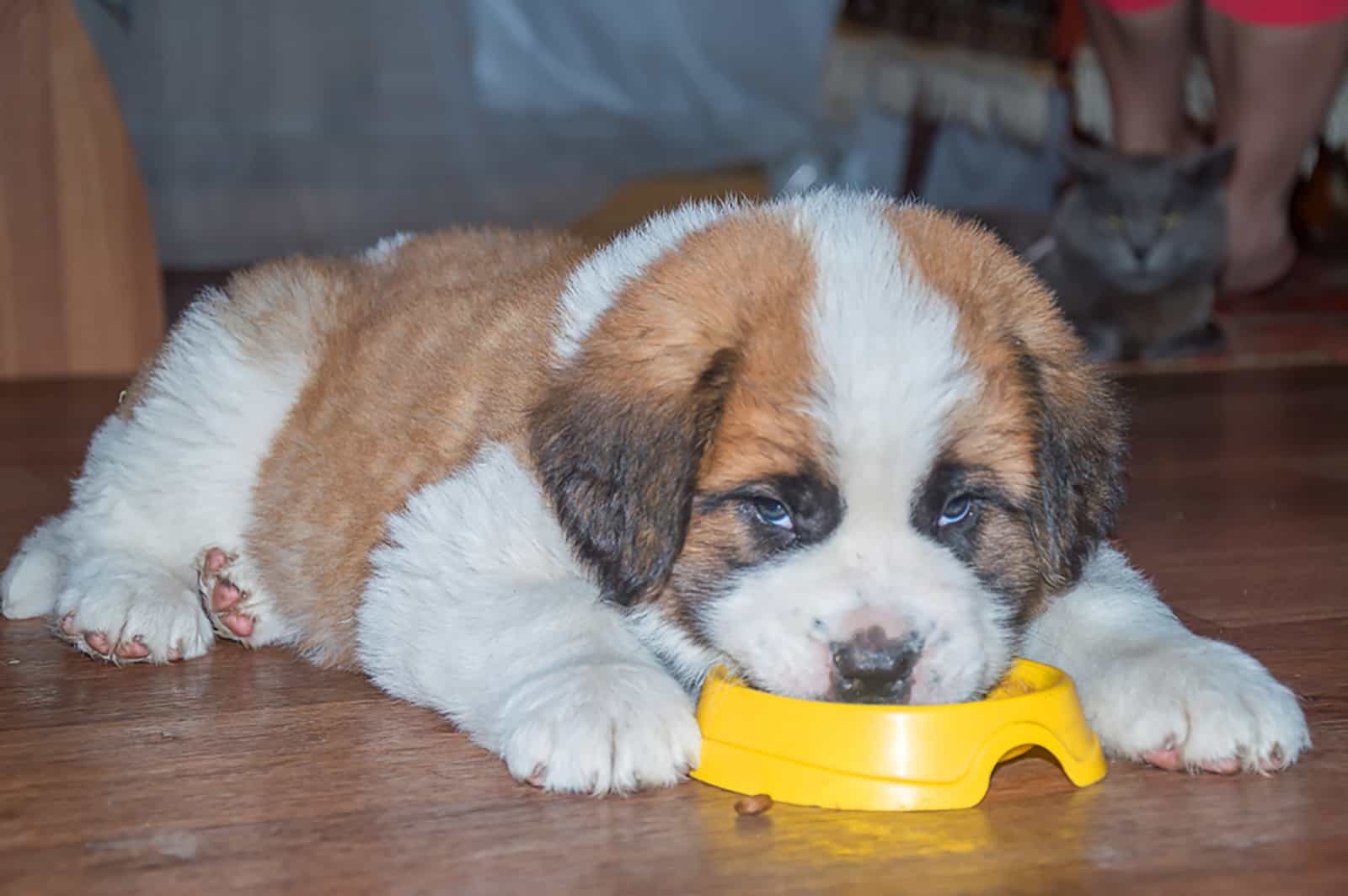
Even though they are a large breed of puppy (check the Saint Bernard growth chart for more details), Saint Bernard puppies usually develop significantly slower than the majority of other dog breeds.
They start approaching their maturity at about 12 months but, even after that, they keep gaining weight and muscle until they finally stop growing completely by the time they are two years old.
But having a relatively slow growth rate doesn’t mean that there aren’t constant changes occurring in their furry little bodies, and their diet should reflect that.
With regards to their nutritional needs, St. Bernard puppies can be roughly divided into two age groups: those under four weeks of age, and those over.
The reason that we draw the line at four weeks is that this is usually the time when they stop depending solely on their mothers for food. In other words, they stop with the milk-only diet and slowly start integrating dog food.
Saint Bernard Puppies Younger Than 4 Weeks
As we previously mentioned, from the time of their birth and up until they are around four weeks old, St. Bernard puppies will not require you to feed them in any way. Unless they have been separated from their mother at birth.
Saint Bernard puppies are very fragile and sensitive at this age and they are so reliant on their moms that they would be completely lost without them.
They are just starting to open their cute little eyes and the world around them is a complete mystery to them.
Mother’s milk is essential for them to survive and that’s why it’s recommended for them to live alongside their mom during this early period of their lives.
If, however, they have been separated for one reason or another, it is vital that you seek professional vet advice on buying the right formula.
Saint Bernard Puppies Older Than 4 Weeks
While you can try introducing puppy food to the little guys and girls earlier than this, it is most likely that they will refuse to eat it. After four weeks, they should be more interested in it and start at least sniffing around it in curiosity.
It’s a good idea to still have them around their mothers so that they can count on having her milk when hungry, as not all Saint
Bernard pups will develop at the same pace. Some of them might want a combination of milk and puppy food at first, before fully transitioning.
Giving them a quarter of a cup of kibble should be a great start for them. If you notice that they are eating it, keep giving them that amount and eventually start increasing it when you deem that their appetite has grown and that they’re ready for more.
That’s where you can come back and check the Saint Bernard feeding chart to see what the next level is.
Approaching Adulthood
As they start to experience more rapid growth and approach adulthood, a decision needs to be made to switch their diet from puppy food to adult dog food.
That can take place anywhere between 12 and 24 months of age, so your best bet would be to simply ask your vet for an opinion once your Saint Bernard has reached this age.
Once they’re officially a big boy or a big girl, it’s time to modify their diet again.
How Much Should an Adult Saint Bernard Eat?
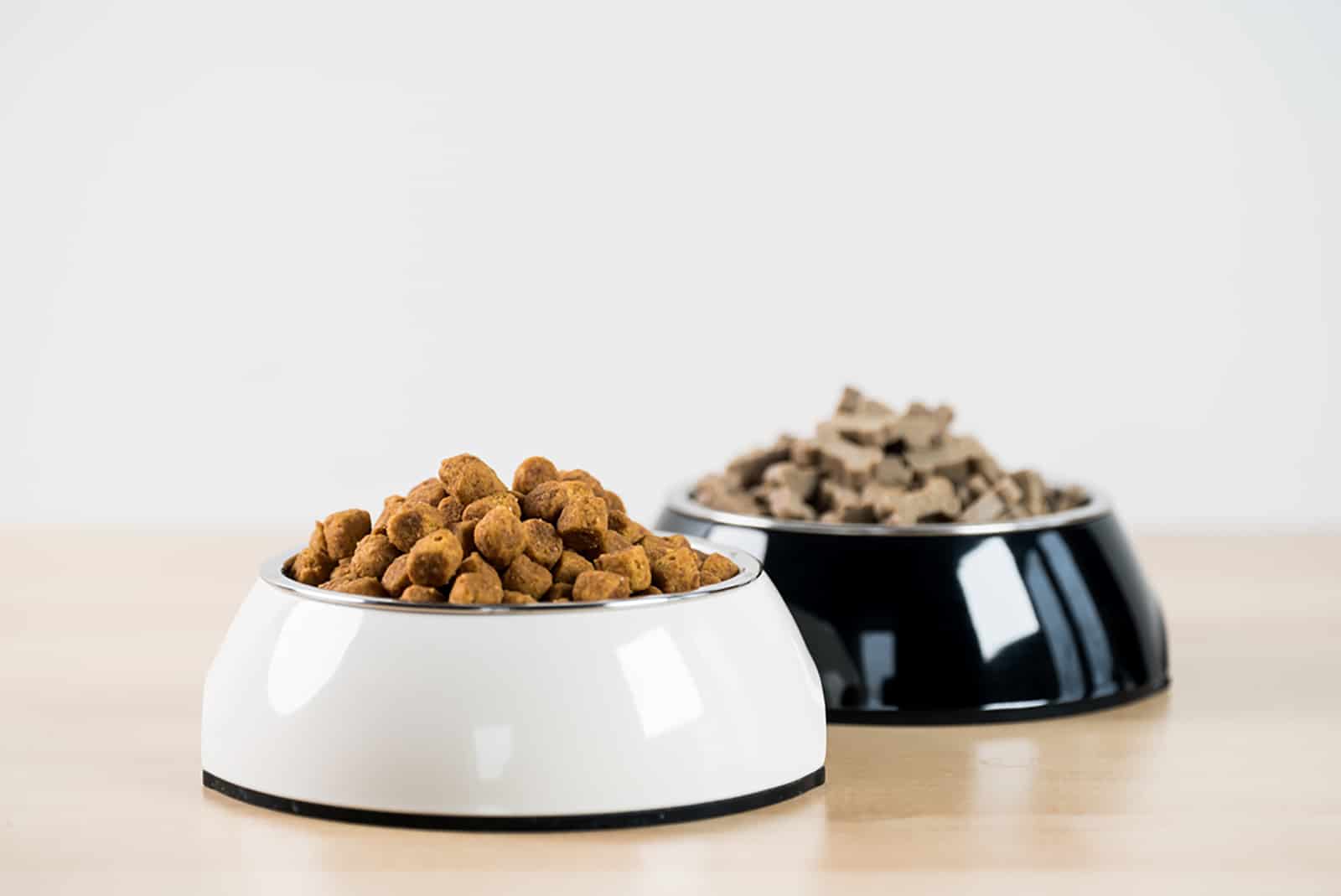
Adult Saint Bernard dogs in their physical prime can weigh around 180 lbs and, as you might have guessed, that type of weight dictates a high-calorie intake.
Once they’ve reached full adulthood and their development is over, you should probably have them settled at 7 or 8 cups of food per day.
There are many formulas that people use to determine the actual size of one cup (in ounces or grams), but most commercially bought dog foods have their own recommended servings printed on the packaging, so that is a good starting point to determine your St. Bernard’s portion size.
Whether you choose to spread that amount of food over two meals in a day or serve it all at once, is entirely up to you.
And make no mistake, portion sizes are important even when the Saint Bernards’ physical development has stopped.
Weight Gain In Saint Bernards
In adulthood, you need to plan their diet so that you have control over their body weight and avoid any unnecessary weight gain.
Unlike some other giant breeds like Great Danes, Mastiffs, or Retrievers, Saint Bernards aren’t exactly famous for loving exercise, so if you feed them too much it could be hard for them to shed that extra weight afterward.
Weight control is extra important for Saint Bernards that have been sterilized, as that procedure can decrease their natural ability to digest fat and they become more susceptible to weight gain.
How Health Issues Influence the Diet of a Saint Bernard
Sterilization is just one example of a special circumstance that your dog might be in, and those have to be taken into account as well.
A number of medical conditions might influence your Saint Bernard’s appetite, dictate special nutritional needs, or maybe even prevent them from eating certain types of food.
All of this factors into their dietary needs, so the best possible thing you can do – in addition to following the Saint Bernard feeding chart – is to ask your vet for advice from time to time because they will be able to better inform your decisions when it comes to your pet’s individual needs.
Senior Saint Bernards
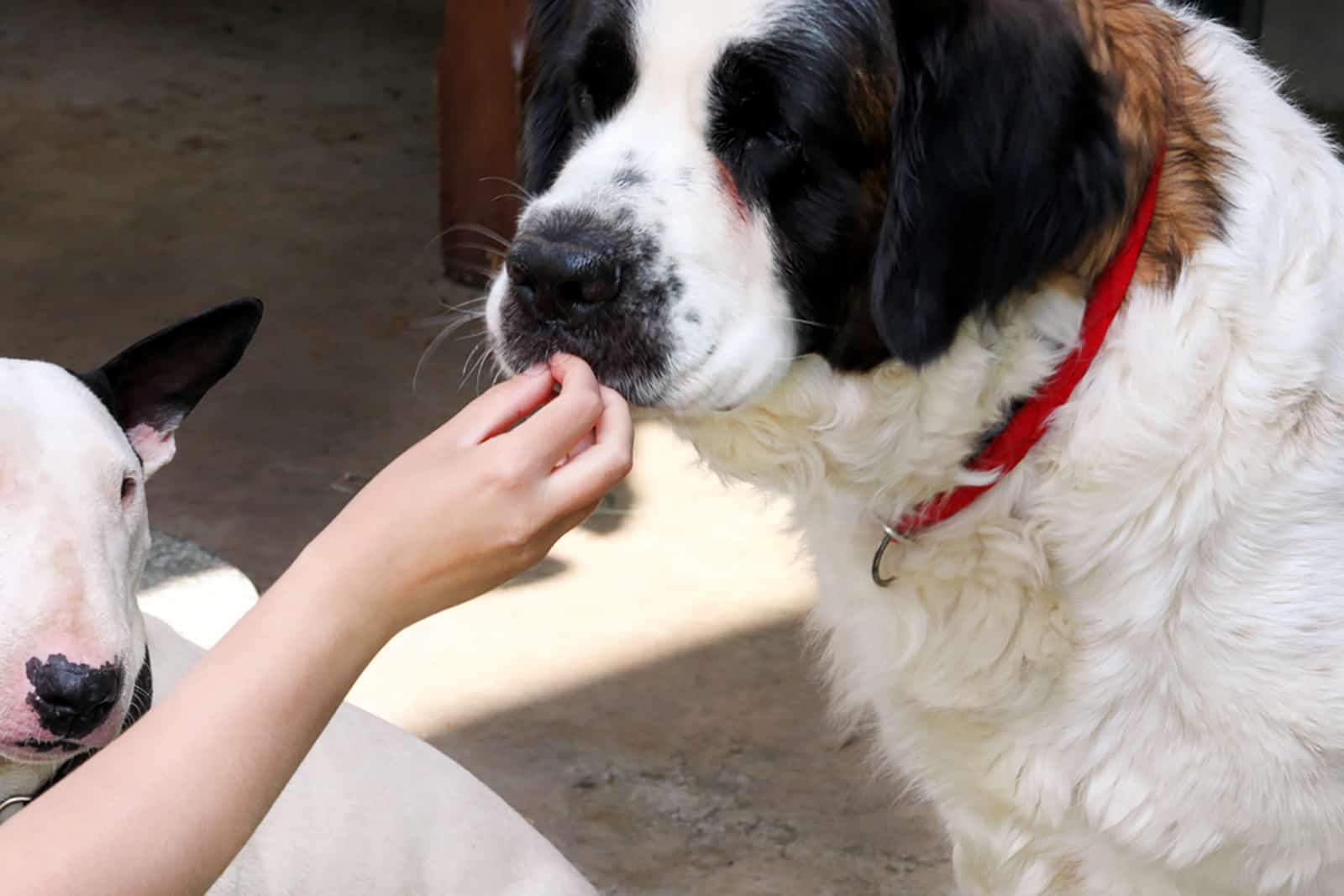
Saint Bernards are one of those dogs that, sadly, have a somewhat shorter life expectancy than other breeds.
They are not exactly on the level of French Bulldogs who on average only live to be 4-5 years old, but with a predicted lifespan of 8-10 years, they still can’t compare to some of the longest-living dog breeds, like Jack Russell Terriers or Border Collies.
However, once Saint Bernards are about four or five years old, they start to enter the latter half of their life, in which their body experiences a lot of gradual change.
At this point in their life, Saint Bernards have an expected weight range of around 140-180 lbs, but their activity levels start going steadily down and it becomes easier for them to retain weight and, therefore, the risk of obesity increases.
How Much Should Senior Saint Bernards Eat?
It’s heavily recommended that you reduce their serving sizes to about 6 cups of food per day to help them stay lean.
Another good idea is to buy kibble or canned food that comes in smaller pieces.
This makes it easier for older Saint Bernards to chew, as their teeth will usually not be as strong as they once were; and also to digest, since their metabolism has gotten slower, as we mentioned.
Other than keeping a close eye on your dog’s weight, once they reach a certain age you should probably increase the frequency of their visits to the vet.
Health Issues In Senior Saint Bernards
Health issues like cancer, torsion, and bloating are unfortunately much more of a reality for elderly dogs than for Saint Bernards in their physical prime. That’s why they need a higher degree of care and attention.
The most notable physical change is probably in their bones, and especially their joints, since the levels of calcium start dropping.
Saint Bernards can experience joint issues that have long-term consequences such as hip dysplasia early in their development but, even when they don’t, old age combined with such a large body wears down their joints and restricts their movement.
Preventing Health Problems With Food
But don’t worry, there are ways to slow down these effects and give your Saint Bernard the best chance of a comfortable and healthy autumn of their life. In fact, high-quality food and a proper diet are a great way to do it. But you need to act in time.
There are specialized food brands for senior dogs that contain all the necessary natural ingredients that these oldies need.
When it comes to joint degradation, in particular, there is both dry food and wet food that contains substances like glucosamine and chondroitin, which are vital in maintaining good joint health and mobility.
In addition to this, there are a number of different supplements that can do the trick, but be sure to check with your vet before choosing the right one.
The Best Type of Dog Food For My Saint Bernard
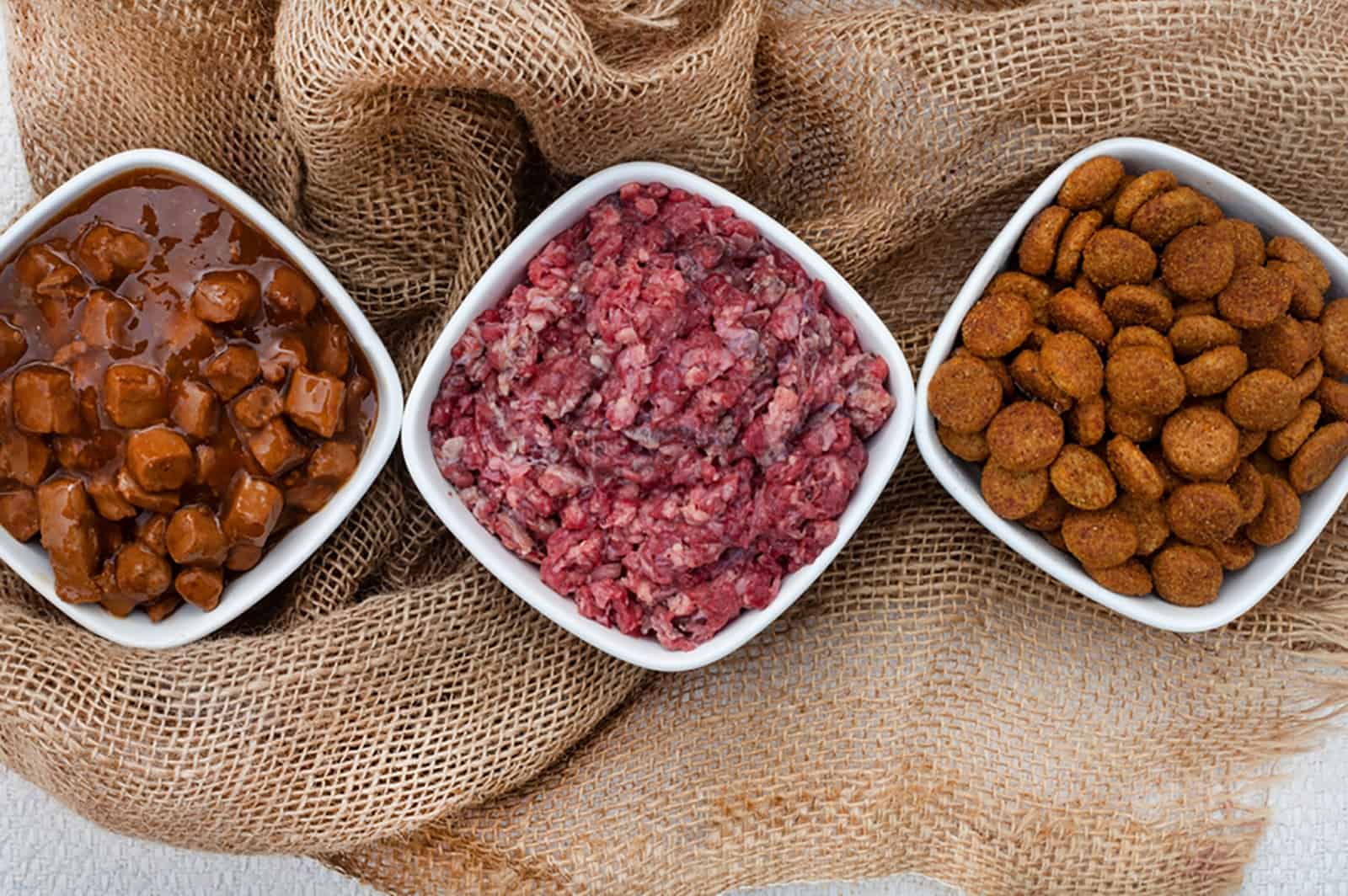
We’ve talked a lot about the amounts of food and frequency of feeding so far, but now it’s time to more closely touch on the subject of the actual food quality for your Saint Bernards.
They need a variety of different nutrients to maintain perfect health, and that includes things like healthy fatty acids, proteins, carbs, antioxidants, and vitamins and minerals, as well as previously mentioned glucosamine and chondroitin.
These should ideally come from good quality animal sources like chicken, lamb, or fish, but also be supported by a rich intake of different fruits and vegetables.
Just like with humans, having a varied diet ensures that your Saint Bernard is consuming all the necessary ingredients for good nutrition.
But finding foods that contain all of those can be a hassle, and all the different options available on the store shelves don’t really make it easier.
For example, one debate that is always going around among Saint Bernard owners — and dog owners in general — is whether dry dog food is better than wet food or is it the other way around.
Well, we’re about to chip in to that debate, so keep reading.
Dry Dog Food Vs. Wet Dog Food
As you may have guessed, there is no one correct answer to this question. Both dry and wet food have their pros and cons and depending on your drool-faced, four-legged pal’s preference, you can safely combine both types.
In fact, using a bit of both is probably the best way of creating a balanced and nutritious dog diet. But let’s just go through the pros and cons of both so that you can have a clearer picture.
Dry Food For Saint Bernards
Dry food, also known as kibble, is probably the most popular option out there, simply because of its incredible convenience. It can stay fresh long after it has been opened so you can safely buy large quantities at once.
But, aside from that, kibble is excellent for your dog’s dental health in particular, which makes it great for a breed like the Saint Bernard which can develop teeth problems as they get older. It’s also great for young developing puppies, as it strengthens their teeth right from the start.
The biggest issue that people usually have with dry food is the overwhelming number of different brands and products that are available commercially.
A lot of these brands are super cheap and that in most cases means that they lack quality. Low-quality kibble can be counterproductive and cause weight issues in Saint Bernards.
Wet Food for Saint Bernards
On the other hand, wet food — or canned food, if you prefer — is quite often the preference of most dogs, simply because it looks and smells more appealing to them.
But there is more to it than looks, as it’s normally very rich in protein and is significantly less processed than dry food. It’s less likely to have a lot of filler, which means that all your beloved Saint Bernard gets is pure nutrition.
But if you go to a supermarket or a pet store and check the prices, you will see why some people are reluctant to rely exclusively on wet food for their furry companions.
It’s usually on the expensive side, and even more so if you are looking for higher-quality brands.
Another possible downside of canned food is that it has a high water content. While this is a good thing because it hydrates the dog, it also means that they have to eat a lot more to feel full.
That again has a financial impact which makes a lot of people stay away from wet food, and if you own a large dog like Saint Bernard that likes a big meal, your wallet might not like it.
Homemade Dog Food For Saint Bernards
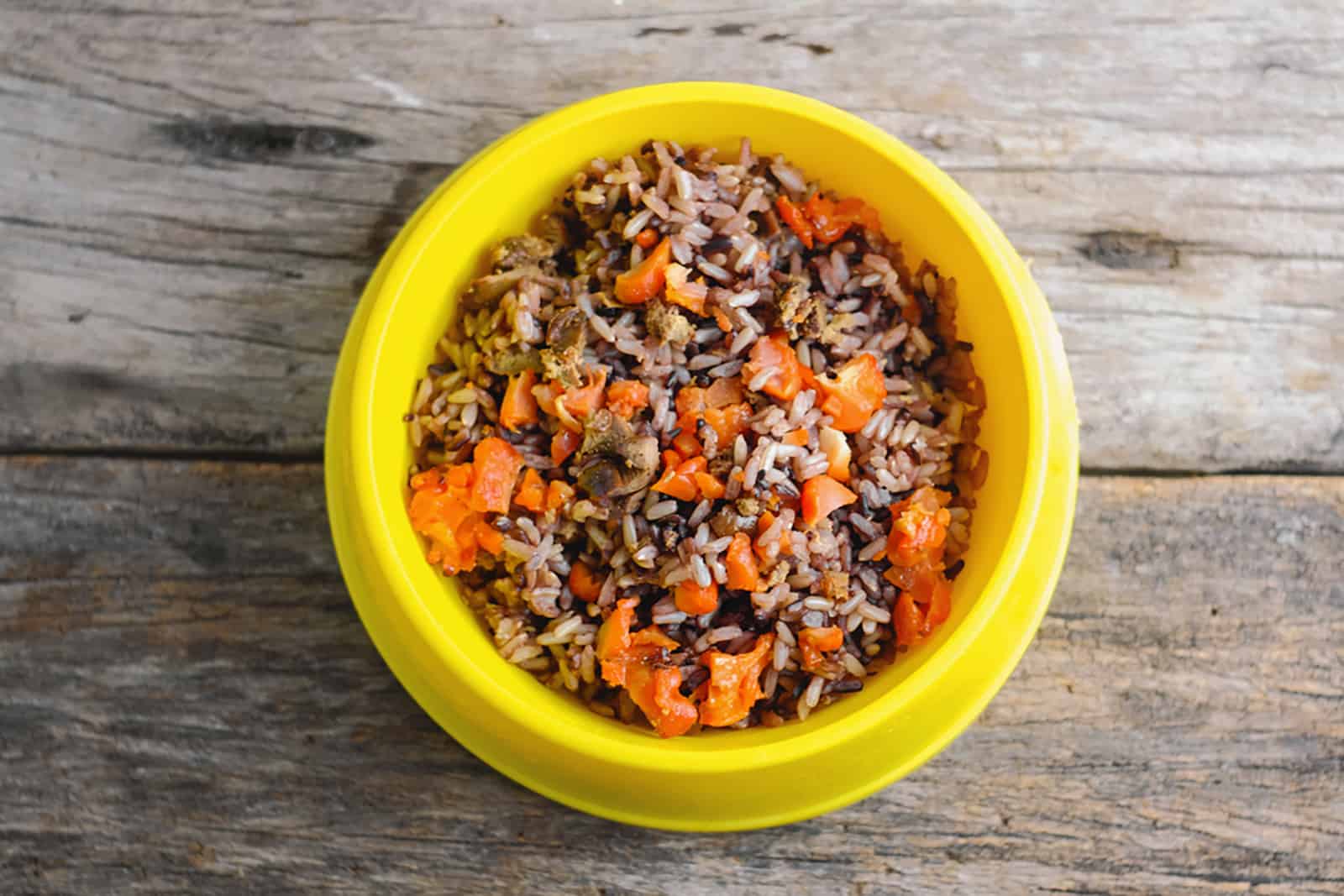
Dry food vs wet food will probably remain a heated debate in the dog-owner community, but there is actually a third option.
Making homemade meals for your pets has been a steadily rising trend in recent years, and there are several reasons why.
So just like we did with kibble and canned food, let’s run through some of the positives and negatives of home cooking for your dogs.
Benefits Of Homemade Dog Food
The first and most obvious benefit is how affordable it is. Instead of burning through your cash to buy a yearly supply of high-end wet food, you can just buy fresh ingredients — most of which you would buy for your home anyway — and make the meals yourself.
Additionally, picking the ingredients yourself gives you greater control over the quality, as you are no longer dependent on trusting the brands or reading the small print on the back of the packaging to figure out if the food is actually any good for your St. Bernard.
Furthermore, in the context of following the Saint Bernard feeding chart, having all the initial ingredients at your disposal gives you the ability to fine-tune the servings according to your dog’s individual needs.
Knowing exactly what and how much you’ve put into the dog bowl is the ultimate method of portion control.
Downsides Of Homemade Dog Food
The only downside to this feeding method is that you really have to know your stuff. You have to know the nutritional value of the ingredients you are using and have to measure everything carefully in order to keep a good balance in your dog’s diet.
You can’t just feed them any scraps or leftovers like peas or sweet potatoes as it would be counterproductive.
My St. Bernard Refuses To Eat

Anytime that your Saint Bernard doesn’t want to eat the food that is in front of them will naturally cause concern in any dog owner’s mind. But it’s important to know that these things happen occasionally and that there are solutions.
Possible Causes
The first thing you need to do is to figure out the cause. There can be many reasons why a Saint Bernard refuses to eat, and pinpointing it correctly will give you a good start in solving it.
Did you adopt them recently from the breeder’s and they still haven’t adapted to their new surroundings? Maybe you experimented with a portion of different food and they aren’t a fan?
Suggested Solutions
Try giving them a different kind of food, or sweetening it with a treat they like. Or maybe turn it into a game of sorts, where they have to work their way to the food. This might entice them to give it a try and sometimes that’s all you need.
However, if you can’t find the answer on your own and the issue persists, be sure to contact your vet and seek medical help, as it might be a sign of health problems.
Saint Bernard Weight

Due to their physical activity levels being lower than those of most dogs their size, Saint Bernards can occasionally suffer from weight gain and even obesity.
Motivating them to exercise, in addition to keeping a steady diet and carefully controlling what they eat, should keep it in check.
For that, we recommend that you not only use a feeding chart, but also a weight chart that can be your benchmark.
If you remember to weigh your Saint Bernard regularly and to check their weight against this chart, your gentle giant will remain fit, healthy, and handsome.
Average Saint Bernard Weight By Age
[table id=562 /]
Saint Bernards are a very particular breed of dog and sometimes they need careful consideration when it comes to their diet.
Hopefully, this Saint Bernard feeding chart will prove to be a useful tool for you.
When used correctly, and in addition to regular vet advice, it can be a great way to make sure that your Saint Bernard is always healthy and happy.
Read Next: Meet 23 Saint Bernard Mixes: A List Of Heavenly Good Boys
